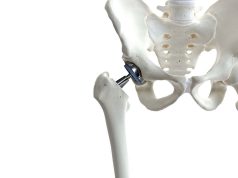But link between fiber intake and knee osteoarthritis was significant in only one of two studies
FRIDAY, Dec. 14, 2018 (HealthDay News) — The inverse association between fiber intake and the risk for incident symptomatic knee osteoarthritis may be partially mediated by body mass index, according to a study published in the December issue of The Journal of Nutrition.
Zhaoli Dai, Ph.D., from the Boston University School of Medicine, and colleagues used data from the Osteoarthritis Initiative (OAI) and the Framingham Offspring Osteoarthritis Study to assess how BMI and inflammation might impact the observed association between greater fiber intake and the lower risk for symptomatic knee osteoarthritis. Participants were followed for four years and 9.5 years, respectively, in the two studies. Incidence of symptomatic knee osteoarthritis was defined as new onset of a combination of knee pain and radiographic osteoarthritis.
The researchers found that symptomatic knee osteoarthritis developed in 861 knees among 2,876 individuals in the OAI study and in 143 knees among 971 individuals in the Framingham study. In OAI, for participants with higher fiber intake (≥21 g/day versus <21 g/day), the odds ratio for the overall association with symptomatic knee osteoarthritis was 0.7 and the odds ratio was 0.93 for the mediation via BMI. However, the association did not remain significant in the Framingham study (OR for overall association, 0.57 [95 percent confidence interval (CI), 0.3 to 1.09]; OR for mediation through BMI, 0.94 [95 percent CI, 0.85 to 1.02]; and OR for mediation through C-reactive protein, 0.99 [95 percent CI, 0.84 to 1.19]).
“Our findings suggest that the inverse association of fiber intake and the risk of incident symptomatic knee osteoarthritis is partially mediated by BMI,” the authors write.
Copyright © 2018 HealthDay. All rights reserved.








